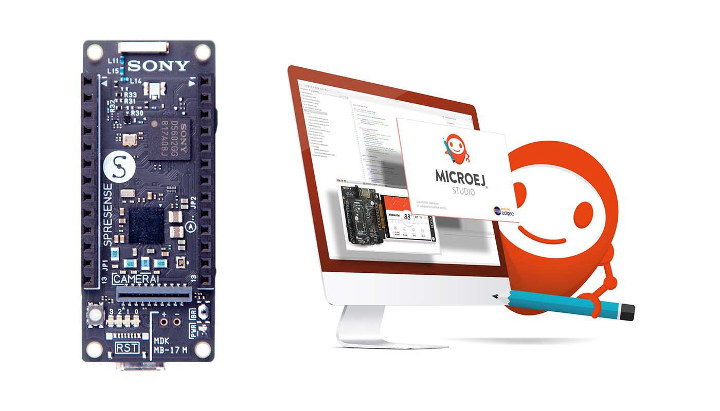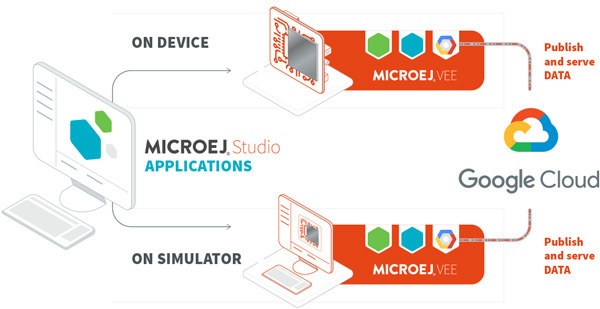Sony Spresense board was introduced in spring 2018 with a 6-core Cortex-M4 microcontroller from the company, GPS & GLONASS, as well as audio support.
The breadboard-compatible board could also be inserted into an Arduino UNO R3 compatible base board, and Sony offered support for both the Arduino IDE and a C-based NuttX-based SDK. You’ll find some more details and photos in our “review”.

Sony has now partnered with MicroEJ to provide developers with Java support on Spresense board through MicroEJ Virtual Execution Environment (VEE). A Java simulator (VEE Virtual Device) allows you to develop software for Spresense independently of the hardware.
Beside plenty of libraries, MicroEJ VEE features MEJ32 32-bit virtual core is compatible with various architectures including ARM Cortex-M, ARM Cortex-Ax, RX, V85, MIPS32, TriCore, and Tensilica. Java enables application portability which means that any GUI/IoT/Security or application code can run on various embedded systems supported by MicroEJ VEE.
There are three main tools for developers:
- MicroEJ SDK to enable manufacturers to build MicroEJ-ready devices.
- MicroEJ Studio to develop applications for MicroEJ-ready devices.
- MicroEJ Store to publish applications and share them with the MicroEJ community.
If you’d like to try it out you could follow one of the guides on the developer website, and/or check out the Weather station demo based on the Spresense hardware.
If you don’t own a Sony Spresense, MicroEJ VEE has reference implementations on other popular development boards including Espressif ESP32-WROVER-KIT V3, NXP FRDM-KL46Z freedom platform, or STMicro STM32F746-DISCO board.

Jean-Luc started CNX Software in 2010 as a part-time endeavor, before quitting his job as a software engineering manager, and starting to write daily news, and reviews full time later in 2011.
Support CNX Software! Donate via cryptocurrencies, become a Patron on Patreon, or purchase goods on Amazon or Aliexpress





